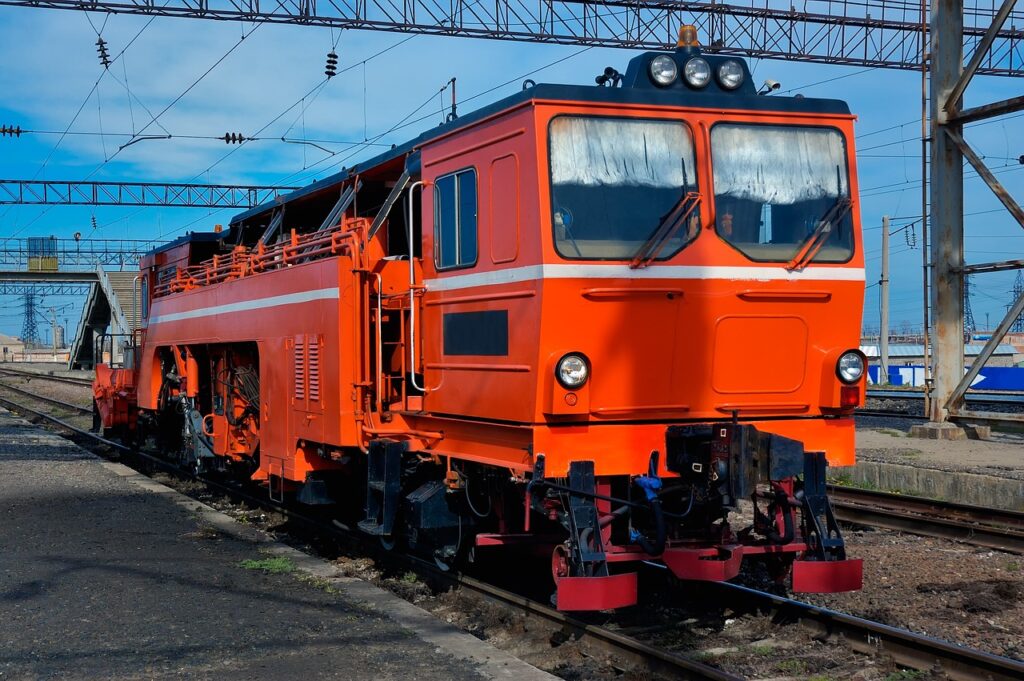The story of Jen’s Hook, formally known as the Janney coupler, began over a century ago when railroads were rapidly evolving, and so were the technologies that drove them. Patented by Eli H. Janney in 1873, the Janney coupler was revolutionary, providing a semi-automatic method for linking rail cars and locomotives together. This innovation not only simplified the coupling process but also significantly enhanced the safety of rail workers, who had previously been tasked with manually connecting vehicles using the more dangerous link-and-pin system. The dramatic transformation in coupling technology was not merely a matter of engineering; it was a response to the urgent need for safer practices in the rapidly growing railroad industry. At the time, coupling-related accidents accounted for a staggering 38% of all rail worker injuries, highlighting the critical need for improvement in safety measures.

Unique design
The Janney coupler’s design allowed for operation from the side of the rail car, eliminating the necessity for workers to position themselves dangerously between moving vehicles. This pivotal change in design provided a much safer working environment and ultimately led to the establishment of the Safety Appliance Act in 1893, which mandated the use of automatic couplers throughout the United States. The success of the Janney coupler was evident as coupling accidents dropped dramatically; by 1902, they constituted only 4% of all railworker accidents, showcasing the positive impact of this innovation. Meanwhile, Janney’s invention faced stiff competition from numerous patented alternatives, yet it prevailed and became the industry standard. The coupler’s enduring design has undergone only minor adjustments since its inception—most notably, it was standardized in 1888 by the Master Car Builders Association, leading to the development of various subtypes such as the Janney Type E and Type F. These couplers were engineered for specific rail car types, ensuring compatibility and reliability across various applications. The Janney coupler, affectionately referred to by many as ‘Jen’s Hook’, remains an integral part of modern rail operations, with manufacturers like McConway & Torley and Amsted Corporation producing contemporary versions that maintain the essential design principles established over a century ago.
The Janney coupler is not merely a relic of the past; it is a testament to the ingenuity of early engineers and the evolution of railway technology. As rail systems continue to expand across the globe, the Janney coupler persists as the most widely used knuckle coupler, demonstrating its versatility and effectiveness. Its compatibility across different rail systems ensures that it continues to play a significant role in contemporary freight transport, enabling the movement of heavy loads while ensuring the safety of workers. Today, trains equipped with Janney couplers can handle tonnages as high as 32,000 metric tons, solidifying its status as a vital component in the rail industry. The Janney coupler’s legacy is one of safety, efficiency, and resilience, making it a remarkable innovation in the history of transportation. As we delve deeper into its functionality and impact, we see how Jen’s Hook has bridged the past with the present, making it an enduring symbol of progress in railway engineering.
Through the exploration of its design and the technology that supports it today, we gain insight into the importance of historical innovations and their relevance in our modern world. The Janney coupler, with its distinct knuckle design resembling a human hand, not only embodies the spirit of innovation but also serves as a reminder of the ongoing journey in the evolution of rail transport—a journey that began over a century ago and continues to shape the future of the industry.
Plays a important role in rail systems,
The Janney coupler, commonly referred to as Jen’s Hook, plays a pivotal role in modern rail systems, connecting freight cars and locomotives with remarkable efficiency and safety. Understanding its functionality requires delving into the intricate design features that have made it a staple in railway technology for over a century. As we explore the anatomy of Jen’s Hook, we uncover how its semi-automatic mechanism revolutionizes the coupling process, streamlining operations and enhancing safety for railway workers.
At its core, the Janney coupler is designed to automatically lock the couplers of adjacent rail cars or locomotives together, enabling secure connections without the need for workers to position themselves between the vehicles. This vital feature addresses one of the most significant hazards in rail operations—that of coupling-related injuries. The innovative design incorporates a locking pin that is activated manually by a worker using a lever called the ‘cut lever.’ This lever operates from either side of the rail car, eliminating the need for workers to step between moving trains, which was a common source of accidents in the past. The only time a worker needs to go between cars is after they have been safely coupled to connect air lines for pneumatic brakes and head-end power cables in the case of passenger cars.
Modern Janney couplers are typically mounted to rail cars and locomotives via draw gear, which allows for efficient coupling and uncoupling. This setup has evolved since its inception, with early Janney couplers often featuring transitional shanks to adapt to legacy link and pin coupler pockets. The ability to accommodate different configurations has contributed to the coupler’s widespread adoption, ensuring compatibility across various rail systems.
One of the most fascinating aspects of the Janney coupler is its distinctive knuckle design, which resembles a human hand with fingers curled, viewed from above. This design not only provides a strong and secure connection but also facilitates the automatic locking mechanism that is the hallmark of Jen’s Hook. The knuckle design allows for smooth coupling motion, enabling the couplers to engage without jarring impacts, which could jeopardize the integrity of the cargo or the safety of rail operations.
The Janney coupler also boasts impressive specifications; it can handle maximum tonnages as high as 32,000 metric tons (35,000 short tons), making it suitable for heavy freight operations. This strength is further enhanced by the materials used in manufacturing, with modern couplers often constructed from high-grade steel that ensures durability and reliability under the most demanding conditions. The design also considers factors like minimum ultimate tensile strength, which for Grade E knuckles is as high as 650,000 pounds-force, ensuring that rail systems can operate safely and efficiently under heavy loads.
Accessibility and safety
Accessibility and safety are paramount in the design of Jen’s Hook. The modern standards set forth by the Association of American Railroads (AAR) mandate that Janney couplers be bottom-operated on cars and top-operated on locomotives. This clear delineation of operation locations further minimizes the risks associated with coupling and uncoupling processes, as it allows workers to remain at a safe distance from potential hazards. When uncoupling, the standard procedure involves compressing the coupling with a locomotive, lifting and holding the release pin, and then pulling the cars apart. This systematic approach underscores the continuous efforts made to enhance safety in railway operations.
In terms of adaptability, the Janney coupler has not only survived but thrived through changes in railway technology and operational demands. Various subtypes, such as Janney Type E and Type F, have been developed to suit different rail car types. These adaptations ensure that the coupler remains relevant in today’s diverse rail ecosystems, catering to everything from hazardous material tank cars to intercity passenger trains. The interlocking couplers, which have been refined over the decades, illustrate how the Janney coupler is versatile enough to meet the specific needs of various freight and passenger services.

Across the globe, Janney couplers have found their way into numerous railway systems beyond the Americas, demonstrating their universal appeal and effectiveness. Countries like Australia, South Africa, and various regions in Asia have adopted the Janney systems, integrating them into their rail networks and benefiting from the enhanced safety and operational efficiency they offer. This worldwide adoption underscores the importance of Jen’s Hook not just as a historical artifact but as a living component of modern transportation infrastructure.
The historical context behind the Janney coupler adds an enriching layer to its narrative. Invented during a time when railroads were rapidly expanding, Eli H. Janney’s innovation was a response to the urgent need for safer operational practices in the industry. The coupling-related accidents that accounted for a staggering 38% of rail worker injuries became a rallying point for safety reforms, leading to the eventual establishment of the Safety Appliance Act in 1893, which mandated automatic couplers throughout the United States. This legislation was a direct testament to the effectiveness of Janney’s invention, showcasing how one individual’s ingenuity could have far-reaching implications for industry standards and worker safety.
The future of Janney coupler
As we look to the future, the Janney coupler is poised to remain a vital component of rail transport. With ongoing advancements in materials science and engineering, further innovations may enhance the coupler’s efficiency and safety features, ensuring that it continues to meet the evolving demands of the railway industry. The enduring legacy of Jen’s Hook serves as a reminder of the importance of innovation in transportation and the continuous pursuit of safer, more efficient technologies.
The Janney coupler, or Jen’s Hook, stands as a remarkable achievement in railway engineering, embodying a history of innovation that has paved the way for safer rail operations. Understanding its functionality reveals not only the intricate design that has allowed it to endure over a century but also its pivotal role in shaping the modern railway landscape. As we continue to rely on railways for transporting goods and people, the significance of the Janney coupler is undeniable, bridging the past and the present in an ever-evolving industry. Whether it’s a freight train carrying thousands of tons of goods or a passenger service connecting cities, Jen’s Hook remains an integral part of the journey, ensuring that the wheels of progress keep turning.
Related posts:
Janney coupler
Railcar couplers: Keeping cars together





